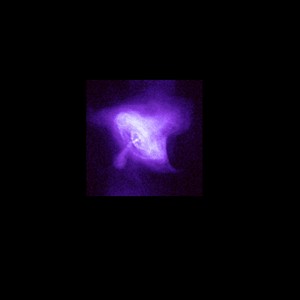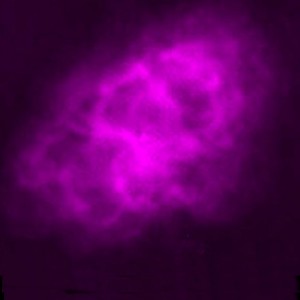A Mutli-Wavelength Supernova Remnant
Page Contents
1. Introduction
As with the Sun, a lot can be learnt by looking at supernova remnants at different wavelengths.
Here we have a number of images of the Crab SNR (Messier 1) taken by different telescopes and satellites. The images have been arranged to be at approximately the same scale for easier comparison.
X-rays

Image from the Chandra X-ray satellite © NASA/CXC/SAO
This X-ray image shows high-energy emission from fast-moving particles in the central region of the Crab Nebula and reveals a brilliant ring around the nebula's heart. The image shows tilted rings or waves of high-energy particles that appear to have been flung outward over the distance of a light year from the central star, and high-energy jets of particles blasting away from the neutron star in a direction perpendicular to the spiral.
Optical

Image from ESO/VLT
This visible-light colour photo illustrates the complex composition of the Crab Nebula. The gaseous filaments are the result of the cataclysmic explosion that blasted the star's outer shell into space. At the centre of the nebula, a rapidly spinning neutron star is spinning at the rate of about 30 times a second! This pulsar is too faint to be seen in these images.
Infrared

Image from 2MASS/UMass/IPAC- Caltech/NASA/NSF
This is similar to the visible image (although the colours here are false), but there are some important differences. First of all, a number of stars can be seen near the centre of the nebula. The visible light from these stars (which are probably behind the nebula) will be absorbed by the coll dust in the nebula, so we cannot see them, but infrared (IR) light penetrates well through dust. Therefore, IR telescope are a good way of seeing deep into the heart of dusty nebula.
In fact, most of the light in this image is due to dust, as the glowing "cloud" is produced by thermal emission from warm dust heated by the supernova explosion and still cooling down.
Radio

Image © NRAO
Supernova remnants typically emit large amounts of non-thermal synchrotron radio emission, and the Crab Nebula is no exception. This type of radiation is a result of fast-moving, high-energy electrons spiralling about magnetic field lines. The general shape and orientation of the radio emission from the nebula resembles the previous couple of images.
This page is based on material from the Multiwavelength Museum created by CalTech
